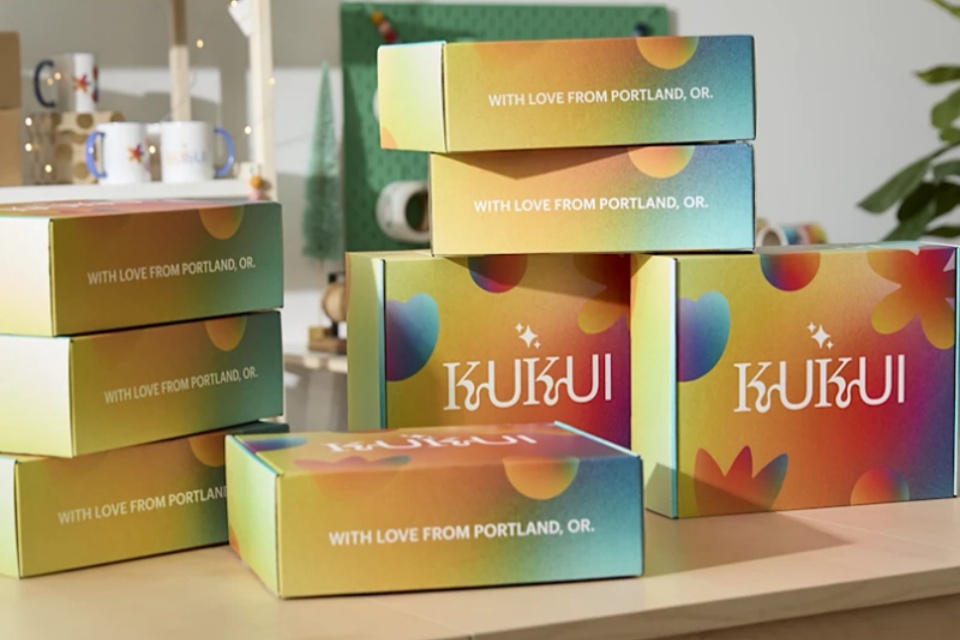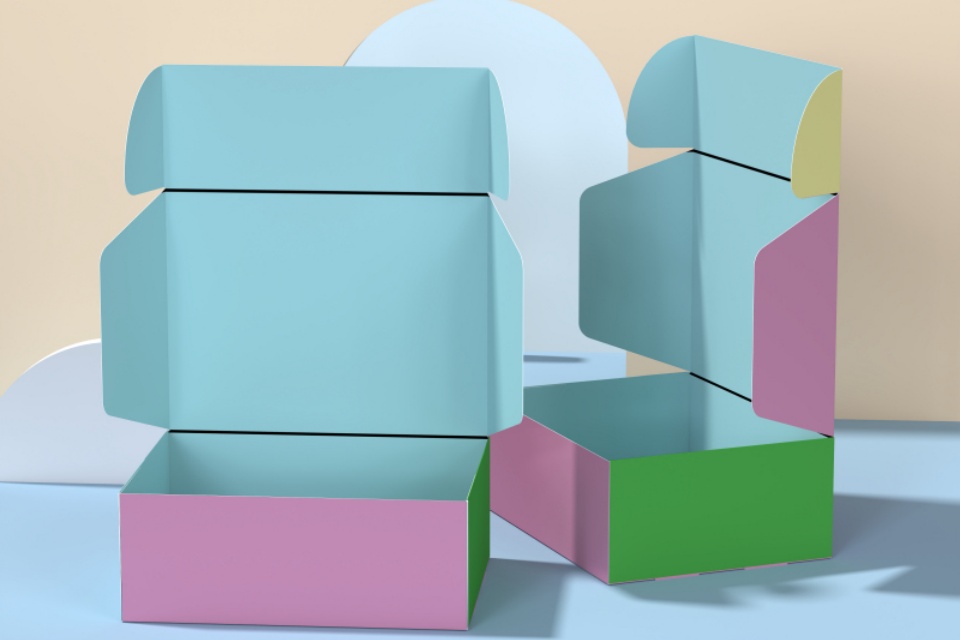Elevating Brand Image With Custom Apparel Boxes
Elevating Brand Image With Custom Apparel Boxes
Summary
Custom apparel boxes are specialized packaging solutions designed to enhance the presentation, protection, and branding of clothing items. These boxes serve a dual purpose: they not only safeguard garments during transit but also play a crucial role in elevating a brand's image and customer experience. With the growing importance of branding in the competitive fashion market, custom apparel boxes have emerged as an essential tool for businesses aiming to differentiate themselves from competitors and foster customer loyalty.
The use of custom apparel boxes offers a range of notable benefits, including cost-effectiveness, durability, and enhanced brand awareness. Made from robust materials like cardboard and kraft paper, these boxes provide superior protection against environmental factors, ensuring that products arrive in pristine condition. Furthermore, the incorporation of unique designs, logos, and colors fosters brand recognition, making it easier for consumers to identify and connect with the brand. This personalized packaging approach not only creates a memorable unboxing experience but also reinforces brand identity, which can significantly impact customer perception and satisfaction.
In addition to practical benefits, custom apparel boxes can evoke emotional responses that cultivate brand loyalty. Through thoughtful design elements and storytelling, brands can create a luxurious and engaging experience that resonates with consumers, prompting repeat purchases and enhancing overall customer relationships. For instance, eco-conscious brands often use sustainable materials and nature-inspired designs to reflect their values, further solidifying customer loyalty among like-minded consumers.
Despite their advantages, the implementation of custom apparel boxes also presents challenges, such as the need for consistent design across various products and the costs associated with production. Brands must strike a balance between functionality and aesthetics while considering market trends and consumer preferences. Overall, the strategic use of custom apparel boxes represents a significant investment in brand image and operational efficiency, underscoring their importance in modern retail.
Benefits of Custom Apparel Boxes
Custom apparel boxes offer numerous advantages that can significantly enhance a brand's image and operational efficiency.
Cost-Effectiveness
Despite some perceptions that personalized clothing boxes are an unnecessary expense, they are actually economical and budget-friendly for brands. Custom apparel boxes can be a worthwhile investment, as they help enhance the overall appearance of products, making them stand out among competitors while providing long-term benefits.
Enhanced Protection and Durability
One of the primary benefits of custom apparel boxes is their ability to provide robust protection for clothing items. Made from durable materials such as cardboard, kraft, corrugated, and rigid boxes, these packaging solutions are designed to shield garments from dust, moisture, and handling damage during transit. Their sturdy structure helps keep items wrinkle-free and secure, ensuring that products arrive in pristine condition and ready to impress customers.
Brand Awareness and Recognition
Custom apparel boxes are instrumental in elevating brand awareness. By utilizing personalized designs and logos, brands can create a memorable first impression that resonates with consumers. When customers receive their fashion line in a custom box featuring the brand's logo and tagline, it not only enhances visibility but also fosters a sense of connection to the brand. Consistent packaging design across various products reinforces brand identity, making it easier for consumers to recognize and trust the brand.
Professional Presentation
Custom apparel boxes add value to packed goods and allow brands to present their products in an impressive manner. They convey professionalism and quality, which can enhance customer perception and satisfaction. The expert craftsmanship and stylish designs of these boxes contribute to a premium look that appeals to consumers, ultimately improving the customer experience.
Emotional Connection and Loyalty
Packaging can evoke emotions that lead to customer loyalty. By creating a luxurious unboxing experience through thoughtful design and branding, companies can build an emotional connection with their customers. For instance, eco-friendly brands often use nature-inspired graphics to reinforce their commitment to sustainability, further enhancing customer loyalty through shared values.
Practicality in Storage and Shipping
Custom apparel boxes are designed to be stackable and efficient for storage, making them ideal for both in-store displays and shipping bulk orders. Their protective design ensures that garments are safe during transit, while their stackable nature maximizes storage space. This practical approach to packaging not only simplifies logistics but also contributes to a more organized inventory management system.
Design Considerations
When designing custom apparel boxes, several critical factors must be considered to effectively elevate brand image and ensure product protection.
Understanding Product Requirements
The initial step in the design process is to gain a comprehensive understanding of the product being packaged. Each apparel item has unique protection and preservation needs that dictate the choice of materials and design elements. Properly addressing these requirements can help maximize the product's shelf life and maintain its quality during transportation and storage.
Material Specifications
Consulting material specifications is essential for selecting the appropriate packaging materials. These documents provide valuable insights into the barrier capabilities and suitability of various films and substrates, allowing brands to make informed decisions that enhance product protection and shelf stability. For example, multi-layer plastic films can offer tailored protection against moisture and oxygen, critical for preserving the quality of apparel items during transit.
Balancing Design and Functionality
An effective packaging design must balance aesthetic appeal with functionality. User testing should be incorporated into the design review process, enabling feedback from the target audience on visual elements, clarity of information, and usability. Additionally, the shape of the package can significantly impact consumer perception; unique and practical designs can enhance usability while capturing consumer interest. Features such as resealable lids or easy-pour spouts exemplify how thoughtful design can elevate user experience and reinforce brand value.
Typography and Color Choices
The choice of typography and color plays a vital role in reinforcing brand identity. Typography should align with the brand's personality, enhancing readability and drawing attention to key information. Color is particularly influential, as it evokes specific emotions and associations; for instance, blue is linked with trust while red conveys excitement. Selecting the right colors helps communicate the desired brand message and appeals to the target audience.
Shape and Graphics
The shape of packaging not only affects aesthetics but also influences functionality and recognition. Unique shapes can make a product stand out on crowded shelves, while also improving the user experience. Innovative graphics and finishes can create a memorable impression, further establishing a brand's identity in the consumer's mind.
Types of Custom Apparel Boxes
Custom apparel boxes come in a variety of styles and materials, allowing brands to choose the perfect packaging solution for their products. Each type of box offers distinct advantages that can enhance the presentation and protection of apparel items.
Box Styles
Custom apparel boxes are available in several styles, including:
Folding Cartons
Folding cartons are made from paperboard, making them lightweight and cost-effective. They are easy to assemble and provide ample branding space, allowing brands to present their garments neatly while combining versatility and appeal in packaging solutions.
Rigid Boxes
Rigid boxes are constructed from robust materials such as chipboard or corrugated cardboard, offering luxury and durability. These boxes are especially popular for high-end apparel, as they provide exceptional protection and an upscale unboxing experience.
Corrugated Boxes
Known for their strength and adaptability, corrugated boxes consist of fluted cardboard layers sandwiched between linerboard. They are highly resistant to impacts and compression, making them ideal for bulk shipments and e-commerce packaging solutions. Customization options allow these boxes to fit various apparel sizes and shapes.
Custom Mailer Boxes
Custom mailer boxes are designed for secure shipping of smaller items. They provide a compact and protective solution, ensuring products arrive safely at their destination. These boxes can be shipped flat to reduce overall costs for brands.
Die-Cut / Custom Shaped Boxes
These boxes feature unique shapes and innovative designs, ensuring a snug fit for apparel items. They not only offer excellent protection but also enhance brand visibility through stylish presentation.
Standard Product Boxes
Standard product boxes ensure ideal protection and presentation for retail and shipping purposes. They are suitable for packing shoes, clothes, and other fashion accessories, available in various sizes to accommodate different products.
Materials Used
Custom apparel boxes can be made from various materials, each providing unique benefits:
Cardboard
Cardboard is the most common material for custom apparel boxes due to its adaptability and printability. It allows brands to create eco-friendly and visually appealing packaging that protects products from damage, moisture, and tearing.
Kraft
Kraft paper is eco-friendly and sustainable, making it an ideal choice for organic products. It provides a natural look that resonates well with environmentally conscious consumers.
Rigid Material
Rigid materials are the most durable option for product packaging, ideal for luxury and fragile items. They provide superior protection and create a premium feel for the unboxing experience.
Customization Options
Customization is essential in creating unique custom apparel boxes that cater to specific product requirements and brand identity. Brands can achieve tailored packaging solutions that align with their vision through various customization options, ensuring a perfect fit for their merchandise.
Design and Features
One of the primary advantages of custom apparel boxes is the ability to customize dimensions, shapes, and styles according to the needs of the clothing items. This flexibility allows brands to present their products attractively while maintaining functionality.
Creative Graphic Design: Incorporating well-chosen images and graphics can effectively convey the brand's story. Visual elements such as lifestyle shots or abstract designs enhance product appeal without overwhelming the overall design.
Branding Elements: Brands can personalize their boxes with logos, colors, and typography that reflect their identity. Hot-stamping and various printing options allow for distinct branding that stands out in a competitive market.
Additional Coatings: Brands can opt for matted coatings or UV coatings to enhance the visual quality and tactile experience of the packaging, providing a luxurious feel that appeals to consumers.
Innovations and Trends
Current trends in packaging design further expand customization possibilities. For instance, the Clever Cutouts trend employs strategic cutouts to create intriguing packaging that visually hints at the product inside, capturing consumer attention through creative form. Additionally, trends like Simplistic Scribbles and Etches focus on authenticity and the human element in design, allowing brands to connect more personally with their audience through handmade aesthetics.
Consistency and Adaptability
Maintaining consistency across all branding touchpoints is crucial. Custom packaging should align with the overall brand strategy, ensuring that it is cohesive with other marketing materials like websites and advertisements. This consistency fosters consumer trust and recognition. Furthermore, as businesses expand, scalable packaging designs can adapt to new products and changing market needs without losing the brand's visual identity, allowing for a seamless transition into new markets.
Case Studies and Examples
Successful Brands Utilizing Custom Apparel Boxes
Several renowned companies have effectively leveraged custom apparel boxes to enhance their brand image and create a memorable customer experience. These brands demonstrate the significant impact that well-designed packaging can have on consumer perception and loyalty.
Nike
Nike is a prime example of a brand that utilizes custom packaging to reinforce its identity. The iconic swoosh logo, coupled with bold colors, not only makes the packaging recognizable but also reflects the brand's values of movement and speed. By investing in custom apparel boxes, Nike ensures that their products are presented in a way that aligns with their dynamic branding, enhancing overall customer engagement and loyalty.
Zara and Bershka
Fast fashion retailers like Zara and Bershka also utilize custom apparel boxes to differentiate themselves in a crowded market. Their attention to detail in packaging, including stylish designs and eco-friendly materials, contributes to a unique unboxing experience that resonates with consumers. This strategic use of custom packaging enhances brand awareness and encourages repeat purchases, as customers associate the premium appearance of the packaging with the quality of the products inside.
Versace and Adidas
Luxury brands such as Versace capitalize on custom apparel boxes to create an exclusive feel around their products. The use of high-quality materials and sophisticated designs not only protects the apparel but also elevates the brand's image. Similarly, Adidas employs distinctive packaging designs that not only reflect the brand's identity but also engage consumers on an emotional level, fostering brand loyalty through a memorable buying experience.
Emotional and Practical Benefits
The integration of storytelling in packaging can also enhance brand perception. For example, brands that incorporate narratives into their custom apparel boxes can create a stronger emotional connection with consumers. This storytelling approach can influence purchasing decisions and encourage customers to return for more, as they feel personally connected to the brand's story and values.



